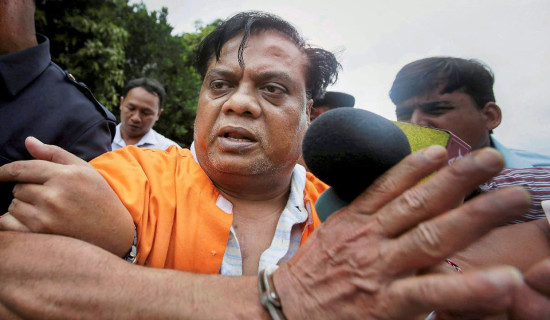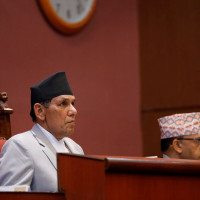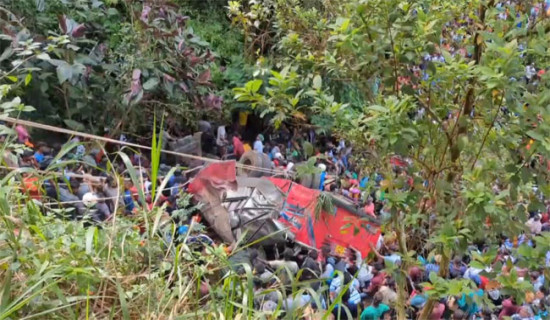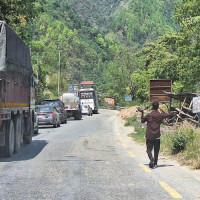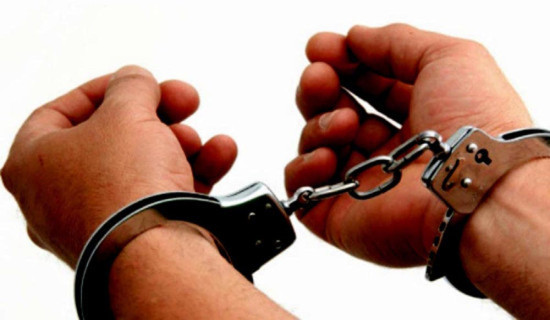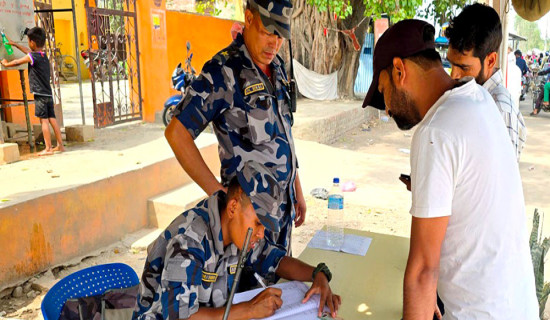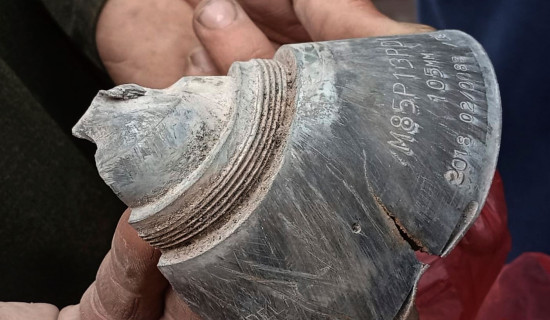- Monday, 12 May 2025
Tales Of Adinath Of Kirtipur
Devendra Gautam
This exercise may inspire or even enable certain people to stand tall and proud, if they have developed this habit of stooping before various power centres for so long that they have forgotten to stand upright! Practice makes a man perfect, you know. Is that asking for too much? Perhaps not. While negotiating the stretch, one may face a practical difficulty, though. Holding up for quite sometime? If so, do not forget to address the nature´s call (Not in the open, of course. For your kind information, it has been quite sometime since we became an open defecation-free country!).
There are no public loos at the Chobhar Gate (in the middle of the journey, there's a lady's and a gent's), so visitors may address this call while stopping for tea/food/snacks or purchasing stuffs like juice or mineral water etc at one of those eateries/teashops/groceries. `Ajhai kati samaya lagchha?´ How long does it take to reach the hilltop? Fellow travellers asking this question while panting their way to a particular destination is nothing new. Drawing from personal experience, it takes an average walker about 20 minutes to reach the Chobhar hilltop from the gate. It all depends on your pace.
If you have ample time to breathe in the fresh air, listen to chirpy birds, go footloose into the woods, have an eyeful and your cellphone-ful of the cityscape, snow-clad mountains and mustard fields blazing like gold instead of heading straight into the temple, reaching the temple may take hours! The fresh air blowing in the pine woods is great for health. That is one of the reasons why these woods witness considerable footfall early in the morning, more so on holidays. For the religious and the spiritual minded, these woods and the hilltop are sacred. The hilltop has the temple of a deity that the Hindus and the Jains refer to as Adinath whereas the Buddhists identify the deity as Anandadhari Lokeshwor/Anandaadi Lokeshwar, one of the four Lokeshwars.
The followers of the Nath sect believe that this deity dates back to the times of creation of the high heavens. They consider it to be the oldest among the Nath deities. People believe that the deity fulfils their wishes and blesses the faithful with good health. That is also the reason why people from far and wide visit this shrine.
So, let's revisit a bit of history based primarily on folklores and leave the unanswered questions to mystery, at least for now. Imagine the times when the Kathmandu Valley was one big lake! Even then, Chobhar, at least a part of it, was above water and hosted a human settlement with houses made of stones and mortar. The old name for Chobhar is Lhonde, meaning houses made of stones, apart from Swarnagiri.
Abode of Adinath and Jalavinayak
Interestingly, Chobhar has its roots in the Nepal Bhasa words 'Chwa' and 'Baha'. Chwa means the highest point and Baha means the monastery. Chwabaha means the monastery located at the highest point, within the valley. Chobhar is from where Lord Manjushri (called the first tourist of Nepal), with the help of his khadga (scimitar) and local people, cut through the hill blocking the flow of lake water southwards, draining the lake and making the valley inhabitable for humans, as per Buddhist beliefs. The Hindus believe that it was Lord Krishna, who drained the lake and made the valley inhabitable, using his sudarshan chakra.
On the foothills of Chobhar, there's a temple of Jalvinayak (Kwayana in Nepal Bhasa), considered the eldest of the four Vinayaks that adorn the valley, the other three being the Chandra Vinayak, Surya Vinayak and Ashok Vinayak. Per the folklores, Manjusri/Krishna had offered puja to Jalvinyak (the Vinayak with his abode in water) before embarking on the challenging task of boring through the hill and draining the lake, given that Vinayak is the remover of obstacles. Draining the lake meant finding/creating a new habitat for aquatic creatures like Karkotak the serpent. That is how Taudaha, a water body not very far from the Jalvinayak temple, came into existence.
Theft of Gold-Giving Deity
The hilltop was not the seat of Adinath, originally. As per folklores, it was the abode of Vasundhara (also called Chyangrishi, Chengreshi, Chereshi in the Tibetan language), the deity believed to bestow his/her place of residence with gold. Indeed, the other name of Chobhar is Swarnagiri (the gold hill).
In ancient times, there was this tradition of pulling the chariot of this deity up to the shrine of Seto Matsyendranath at Janabahal for facilitating a kind of get-together of the deities as part of some religious procession(Jatra) during religious festivals. This practice continues till date during such processions.
On one such occasion, during the return of the chariot of Vasundhara from Janabahal, a mishap occurred. The chariot got stuck at Daangancha, a spot along the Vishnumati river close to the Kumari Club, Kirtipur. The river must have been flowing in spate in those times, making the task of conducting the divine journey quite difficult. Also notable is the practice of not allowing the pulling of chariots over the bridges.
For example, the chariot pullers wad through the Nakkhu stream while taking the chariot of Rato Matsyendranath from Jawalakhel to Bungmati on the concluding day of Matsyendranath Jatra.

Unable to pull out the giant wheels and keep the procession going, the men tasked with pulling the chariot left, leaving the deity to fend for himself.
Seizing on that opportunity, some traders from Tibet allegedly stole the deity and took it to their place on their back. If folklores are to be believed, the deity bit those thieves on their back in a bid to free himself, so they tied him back to back. These tales attribute the gold fortunes of Lhasa (Tibet) to this stolen deity, who is said to have been kept amid high security
in a shrine with locks and all. With the resident deity stolen, the divine seat at the Swarnagiri hilltop became empty.
Journey from Sanagaun to Chobhar
Meanwhile, at Sanagaun (Siddhipur, Lalitpur), where the temple of Lord Adinath was located, local people were having a hard time. Reeling under a disease outbreak, the angry, tired and frustrated locals found fault with Adinath and consigned his idol to the Nakkhu river.
At Chobhar, Nanda Gwa (a cowherd) was witnessing a strange phenomenon. His cow had stopped giving milk, all of a sudden! One day, the cow-herder saw his cow offering milk to an idol. It was the idol that the locals of Sanagaun had gotten rid of! The idol had remained stuck near the confluence of the Nakkhu and the Vagmati rivers, as if it did not want to go down the river any further!
The readers of this day and age may not believe it, but the cow-herder had a chat with the deity. His desire was to take the god to the Chobhar hilltop and install him in place of the stolen deity. This new deity was willing to adorn the hilltop, but the cow-herder had to first convince fellow villagers. So, up he went and took up the matter with the community, which agreed with his plan.
On the day of Chaite Dashain, Nanda Gwa and other villagers went to the spot albeit late, given that all those discussions and preparations for the grand procession took time. Folklores have it that they found the deity looking towards the Chobhar hilltop, waiting for the locals to come and take him to their village. Based on this lore, the Kachchapaal Suvarnagiri Mahavir has this image of Adinath/Anandaadi Lokeshwor looking upwards (towards Chobhar).
In memory of this rescue of the deity, a grand religious fair takes place on the day of Chaite Dashain, drawing people from far and wide on the river banks and at Chobhar. On that day, the idol of Adinath is brought to the banks, kept at Davucha all day, his Dashakarma (10 rituals) performed and returned to the hilltop in the evening.
The descendants of Nanda Gwa conduct those rituals, also pointing at the place where the deity was found.
Interestingly enough, Nanda Gwa and his descendants have only one male heir. Even if more than one male heirs are born, only one survives.
During Chaite Dashain, Nemkuls of Sanagaun have a special role to play. For eight days, they come walking all the way from Sanagaun to decorate the idol of Lord Adinath.
As for renovation, the Adinath temple was renovated during the times of King Amshuvarma, King Pratap Malla and the Rana Prime Minister Chandra Shumsher. Interestingly, apart from Chobhar, Sainbu (Bhainsepati), Bhaajangal and Naikap are considered quake-proof because of the presence of hard rock on the surface.
Indeed, during the Gorkha earthquake, 10 people died at the Takarcha tole nearby, while there was no casualty in this area.
(Based on conversation with Sunil Dangol, a member of Kirtipur municipality ward number 6 and the local good governance committee, and Rajesh Shakya, dyapala, priest of the temple).
(Gautam is a freelancer)



